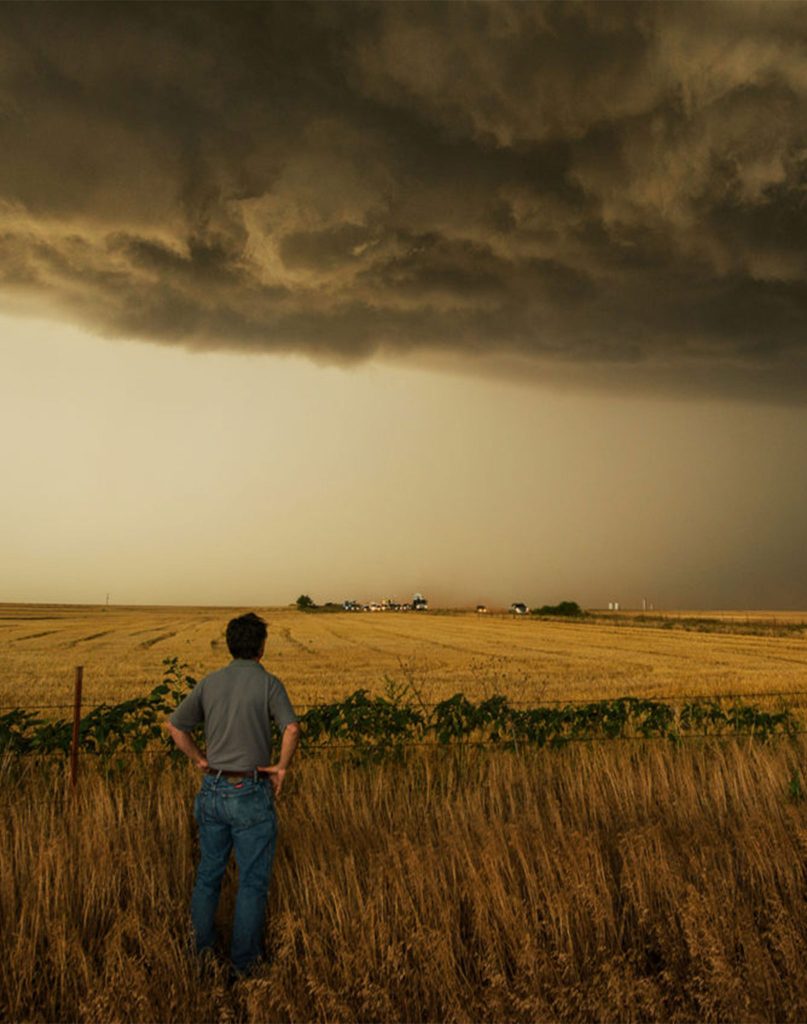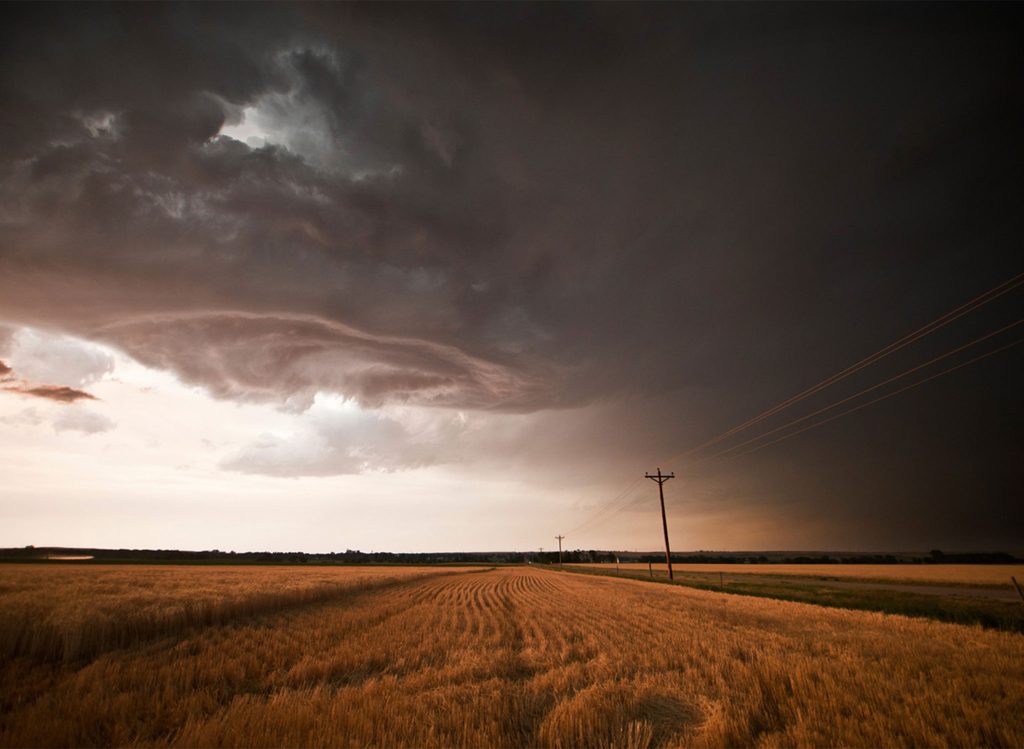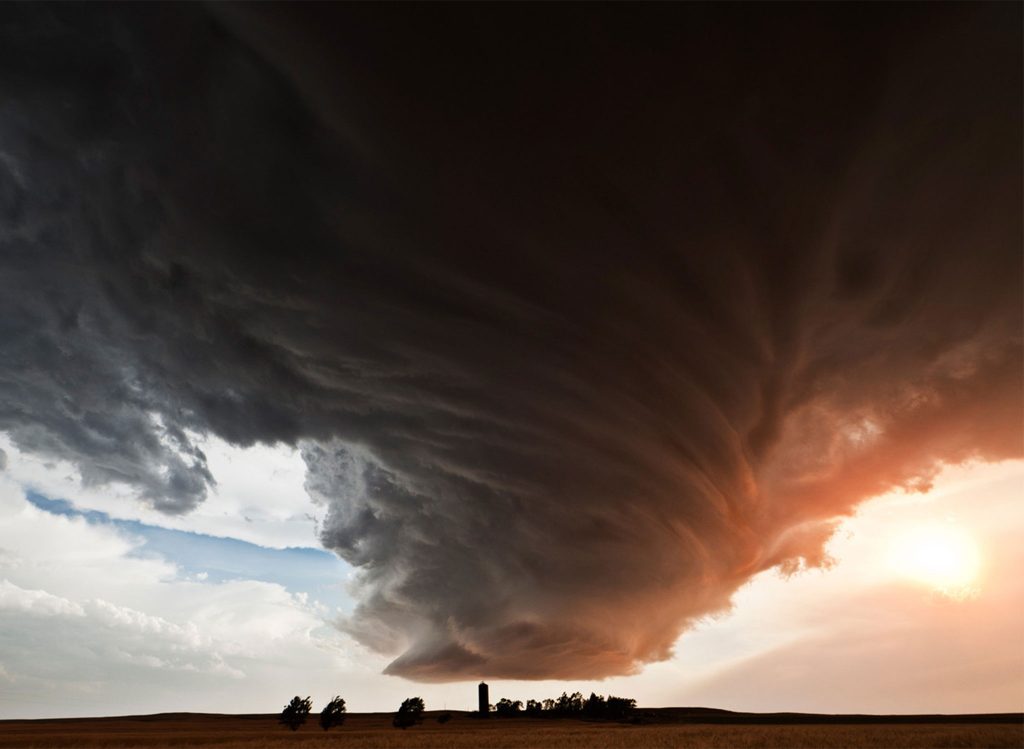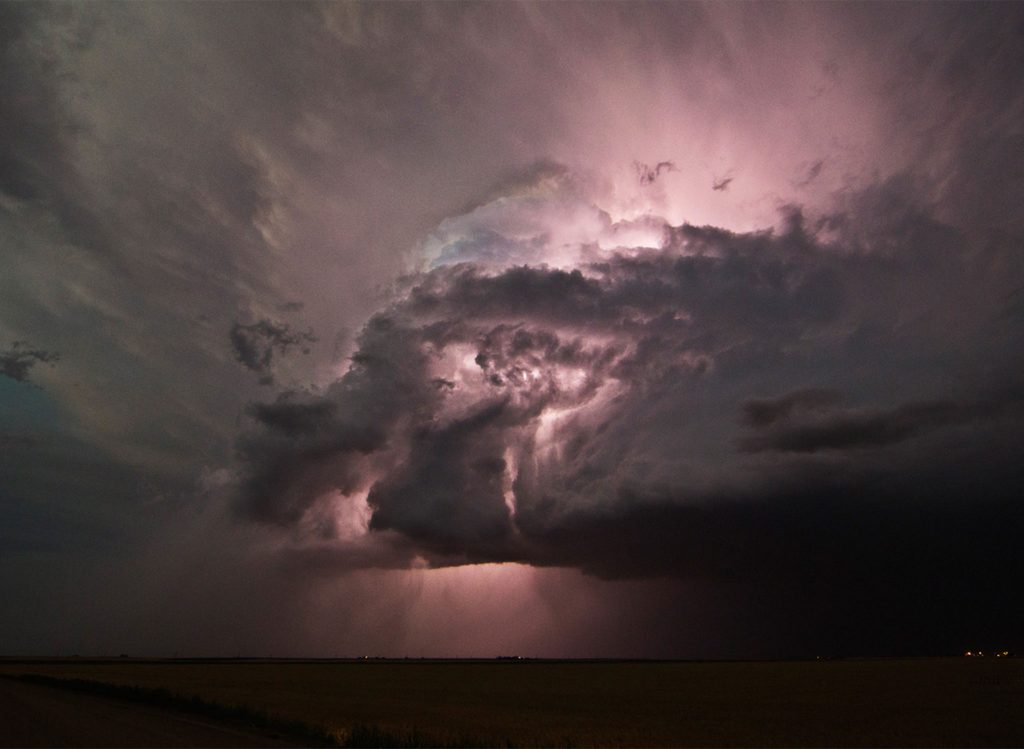
Growing Younger
Lighten the burden of self doubt with this thoughtful strategy.

Lighten the burden of self doubt with this thoughtful strategy.
in Self
At a specific season in early May, hordes of storm aficionados seek out America’s deadliest storms to witness nature’s tremendous glory. Returning from the far reaches of Tornado Alley, storm chasers Brantley Hartgrove and Camille Seaman testify to the potent energies and wonder found from living at life’s edge.
I’m not sure why I chase storms. Perhaps it’s to witness the incredible beauty of what Mother Nature can create.
Tim Samaras

At 6.23pm on May 31, 2013, the screeching cry of a black wind shattered across the sprawling plains southeast of El Reno, Olkahnoma. In just thirty seconds, the wingspan of the monstrous whirlwind had swiftly expanded from 1.6km to 4.2 km, lashing ravenous, orbiting sub-vortices in its wake – the widest tornado ever recorded. In the midst of this deadly storm, legendary chaser and pioneer Tim Samaras, along with his 24 year old son, Paul Samaras and meteorologist Carl Young had been conducting lightning research; positioning atmospheric pressure probes and infrasound tornado sensors into the paths of a twister. Throughout the active tornadic periods of mid to late May, the trio had been seeking to penetrate the concentric walls of each tornado and collect data from its rotating eye. What ensued occurred in a matter of seconds. With visibility shrouded by thick bands of heavy precipitation, the storm raked across the plains. Suddenly and without warning, the tornado turned on its violent path; its yawning mouth hurtling rapidly from 32km/h to 97 km/h in minutes. The devastating fatality to Tim Samaras and his team had been the first known instance of a storm chaser killed by a tornado.
Every year between the periods of late spring and early summer, hundreds of storm chasers mount their vehicles in a thrill-seeking pilgrimage of tornadoes in flight. Tracing a long belt of country known as Tornado Alley, these seekers chase the breath of the storm down the corridor of land that runs through the middle and south east region of the United States. For the initiated few, chasing the shadowy eye of the storm is to reckon with the overwhelming beauty of nature and the human experience.
Storm Chaser, Author The Man Who Caught the Storm: The Life of Legendary Tornado Chaser Tim Samaras

It can seem like there are no mysteries left sometimes, but there are.
Brantley Hartgrove
Brantley Hargrove: I don’t think many people can see a tornado just once and turn away from that and not go chasing again. I know that was certainly true for me. A lot of people come at it from many different ways. Some people didn’t grow up out in tornado alley, but they are still fascinated by it. Ever since I was a little kid I’ve always been fascinated by tornadoes. Tornadoes were a fact of life in Texas, and they continue to be; I’ve had some pretty hairy experiences with tornadoes in my area. I think that left a lasting impact on me. For the rest of my days after that, I always sort of wanted to see one. One of my first newspaper jobs was at a paper in Wyoming, and I distinctly remember the first time I saw a funnel cloud. There was this reported tornado that touched down outside the city and me and the photographer went out and chased it. I didn’t see just a whole lot of it but I mean it was an exhilarating experience. We didn’t know the first thing about storm chasing but we would take off after it just to see if we could see something.
BH: They run the gambit really. Some are blue collar people, some of them are people with PHds, wealthy, you know. They’re all types that come to storm chasing, so it would be hard to pin one sort of archetype. But there are probably a couple of hundred of the serious ones. In some sense the serious ones are the same in that they are all obsessed by trying to find these events and will drive to the ends of the earth to see them.
BH: A lot of the time the storms you get come through the night. I have distinct memories of waking up after a really bad storm overnight, and finding our plastic lawn chairs had been blown from the porch and that one of their legs had impaled our little camping trailer. I had this oversized trampoline – a lot of kids I knew did – and one day we woke up and it was in the trees. You could always tell when they were coming, because in the daytime the sky can take on this ominous green colour. There’s a certain electricity in the air, that you can tell; a kind of frizz of sensation that happens. It’s a certain kind of feeling of, “okay there’s potential energy here, I feel like it’s going to get sped.” The Jarrell Texas F5 tornado happened in ‘97. I didn’t see it, but I distinctly remember going outside that afternoon as it was occurring, and I’ll never forget the sky was just this pea soup green. It was just the strangest thing. I’ve never seen anything like it. Those were the strangest skies I’ve ever witnessed.
BH: Oh sure yeah, they definitely make different sounds. It kind of depends on where they are. If the tornado is going through a populated area with lots of structures, there will be a sort of low frequency roar. The tornadoes that I saw were going mostly through open cropland and I always thought it manifested as more of a white water sound; a really enormous waterfall.

BH: No two tornadoes really are the same. They can be so different depending on the conditions. Some of them are pretty simple, two cell tornadoes, that just look like the archetypical presentation of a tornado which is this long tube. And some of them have multiple vortices. They can be this shaft through which these smaller vortices move. Tornado formation is incredibly complex and there are still aspects of it that we don’t understand. But generally, you’re going to have some kind of upward draft and some kind of convergence at the near surface level to focus that broadly rotating air into the sharper vertical vorticity.
BH: It’s a truly strange thing to see something that is bigger than any skyscraper, bigger than any structure you can imagine, and it’s constantly moving. It’s just a very odd thing and there’s really no preparing yourself for it. You can’t really imagine it until you’re there and you get a feel for the scale of it. And just being inside this system; we were standing probably a mile from it, less at times, you could feel the wind pulling past you into the tornado. It’s.. you get a sense for the enormous size of the processes that are at work.
BH: If like me, you live in a big city and in an urban environment, I think there’s a tendency to think that the natural world is something you needn’t concern yourself with; that we are masters of our domain. But one of the things I learnt about tornadoes is that we are most certainly not. There are still things out there that we cannot control and that we don’t understand. It can seem like there are no mysteries left sometimes, but there are. Tornadoes are one of those mysteries that we still don’t fully have a handle on, that we still don’t fully understand. I think it’s comforting in a way, that there are still unknowns out there, and that there are people like Tim Samaras that are out there, living these great, adventurous lives, risking everything to understand these really mysterious phenomena.
Storm Chaser, Photographer
I think, as humans, we should see storms as part of us.
Camille Seamann

Camille Seamann: My grandfather would take us out to the nature. One time he took us out, it was very hot. He had us sit there until we were sweating profusely, and after a few more minutes when we were just about to pass out, he pointed up to the sky, and where there were no clouds before, there was this small tuft of cloud that appeared. “That’s your water that’s making this cloud appear,” he said, “that’s your sweat that becomes the rain, that waters the plants, that feeds the animals that feed us”. So in this way, he was always make us feel that connection. When I was photographing storms, I couldn’t help but to hear or feel his teachings as we were chasing. When I look up at a storm, the same thing happens as when I look at an iceberg. I think, “how many ancestor’s sweat is this? How many ancestor’s water is this?” More and more, as we see what climate change is doing, we have to acknowledge that we are all a part of this closed eco-system called Earth. There is no such thing as separate, and no such thing as throwing away. So I think, as humans, we should see storms as part of us.
CS: It’s scary. It can be scary. There are these huge strikes called cloud- to-ground lightning. Huge strikes that looks like they’re about to flit across. Literally, when they hit the ground, it shakes and they start fires and you’re thinking, “I’ve got to go out in that?”. But it gets to the point where you just have to go. There are also such beautiful moments. No two storms are the same, each one is such an individual. To see this creation and destruction happening in front of you, is such a rare thing.
That’s what I wasn’t prepared for. Chasing storms is such a tactile experience, it’s not just visual. First of all, you’re standing in front storms and some of them are literally up to 50 miles wide. How do you even begin to photograph something that’s 50 miles wide and reaches 65000 feet into the atmosphere? It’s still possible for the sun to be shining to your West, and then right in front of you is this great apocalyptic darkness with these incredible colours of turquoise. So being under one of these storms, in front of it, is just incredible. And of course there is the movement of the wind, there is lightning, and there is this kind of smell that’s an electric smell of just before it rains. So all of that is lending to that experience that’s truly awesome and humbling to be in front of.
CS: The biggest lesson I’ve learned is something I can carry with me in every aspect of my life. And that is to stay in the moment. Be present and open for anything to happen. Because anything can happen. You know that saying, “chance favours the prepared?”, I think that that’s what that means; being in the moment. When you’re open to something, that something is going to happen. And if you’ve done your homework, then you are prepared to face it. No matter what it is. It’s not even a question of what’s good or bad, life just is. And so when you’re in the moment, I’m able to be present and see how wonderful and how beautiful this life is and this planet is. And that it’s worth saving.
Chasing has made me realise that this planet is a wonder. Some of the things I’ve seen whilst chasing look like they’re from a science fiction movie. They’re from another planet. It seems impossible that they’re happening on this planet. But there they are, right before my eyes. And so I wish that more people could see that and experience that safely and not feel fear, but feel awe and again, appreciate this planet that we have.
Brantley Hargrove reporter and author of The Man Who Caught the Storm, the American bestseller on the life and death of legendary storm chaser and tornado researcher Tim Samaras. Occasional storm chaser he has chased violent storms from the Great Plains down to the Texas coast, including a land-falling Category 4 hurricane and one of the rarest tornadic events in recent memory. He lives in Dallas, Texas, with his wife, Renee, and their two children. Visit his site here for more information.
Born in 1969, Camille Seaman is a photographer whose work concentrates on covering environmental topics. Between the years 2008 – 2014, she chased and captured storms all over the country and was following the 2013 storm that took famous storm chaser Tim Samaras’ life. Her work “The Last Iceberg” garnered attention worldwide both from the scientific and photographic community. Visit her site here for more information.

Article from the issue :